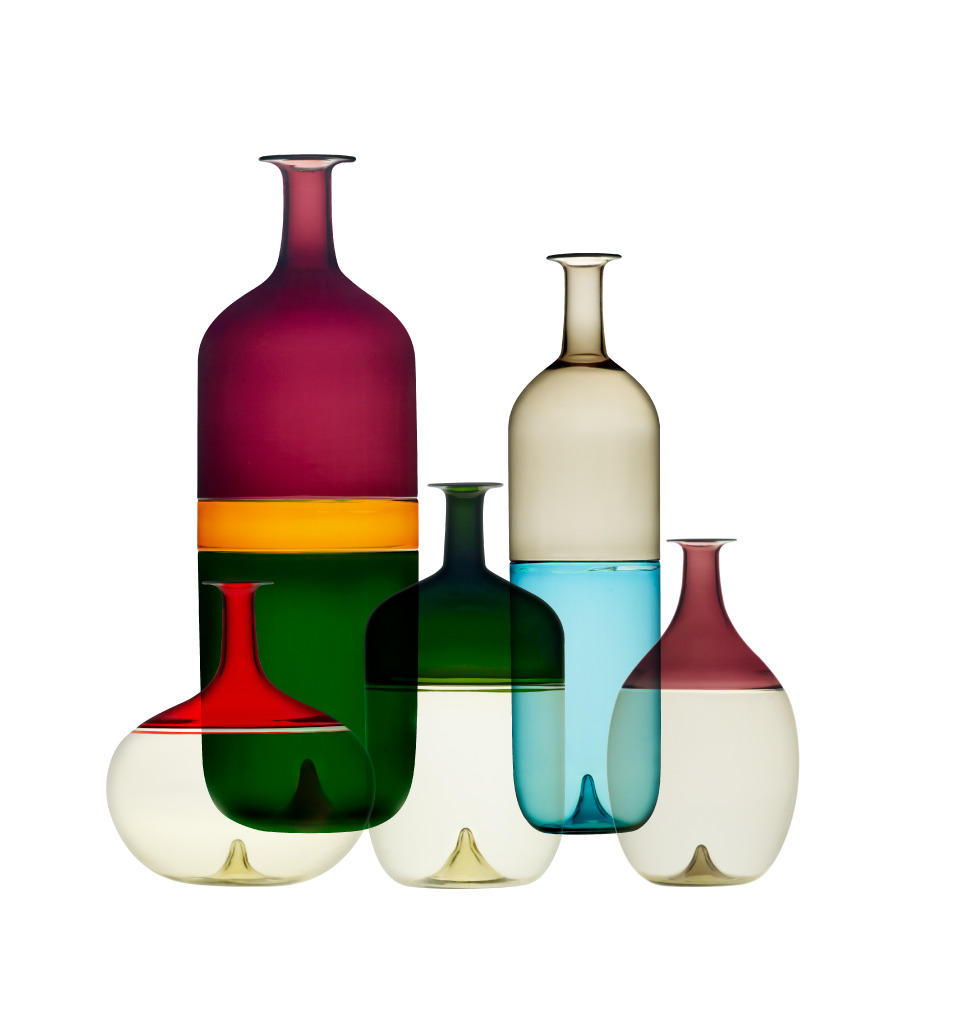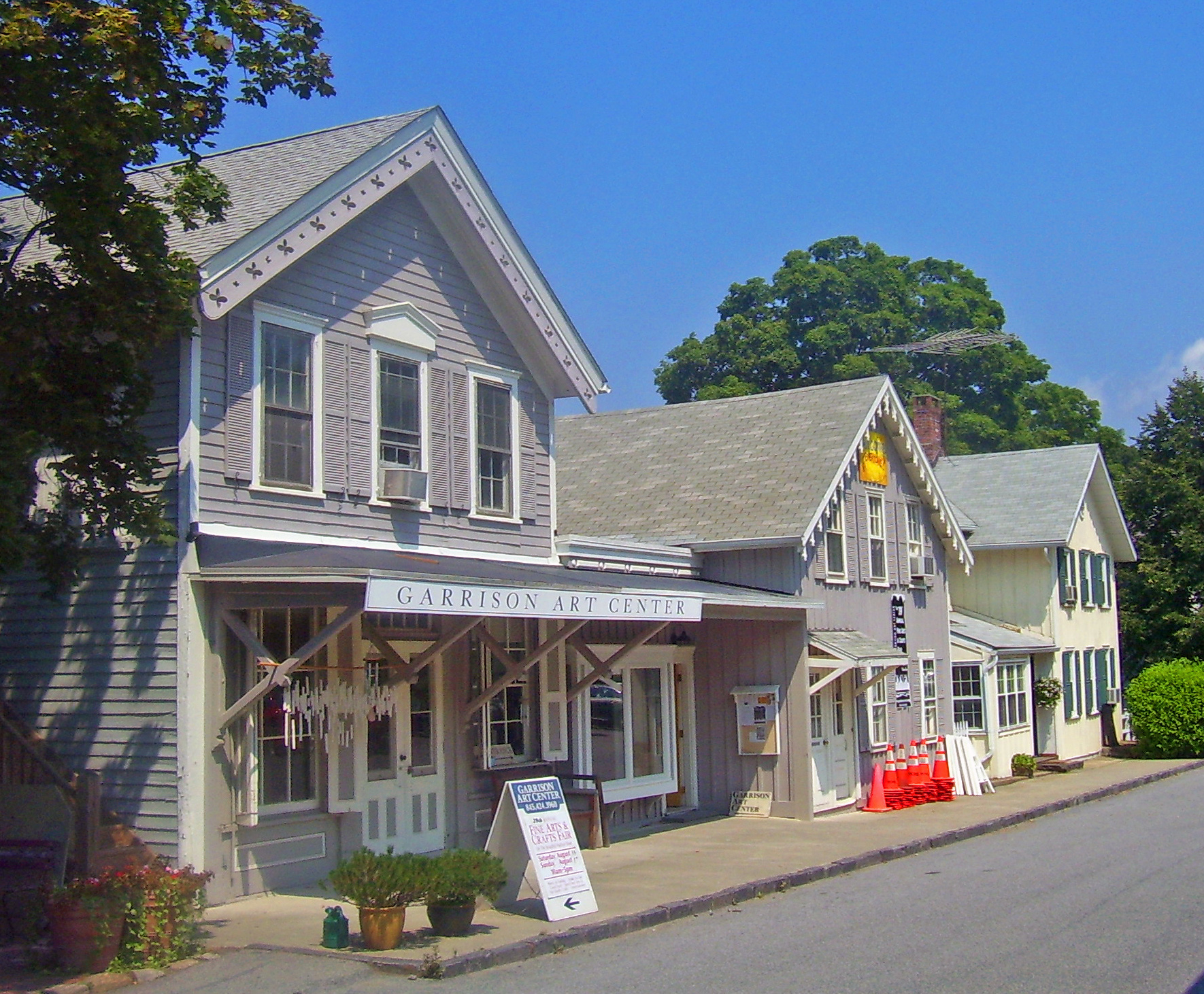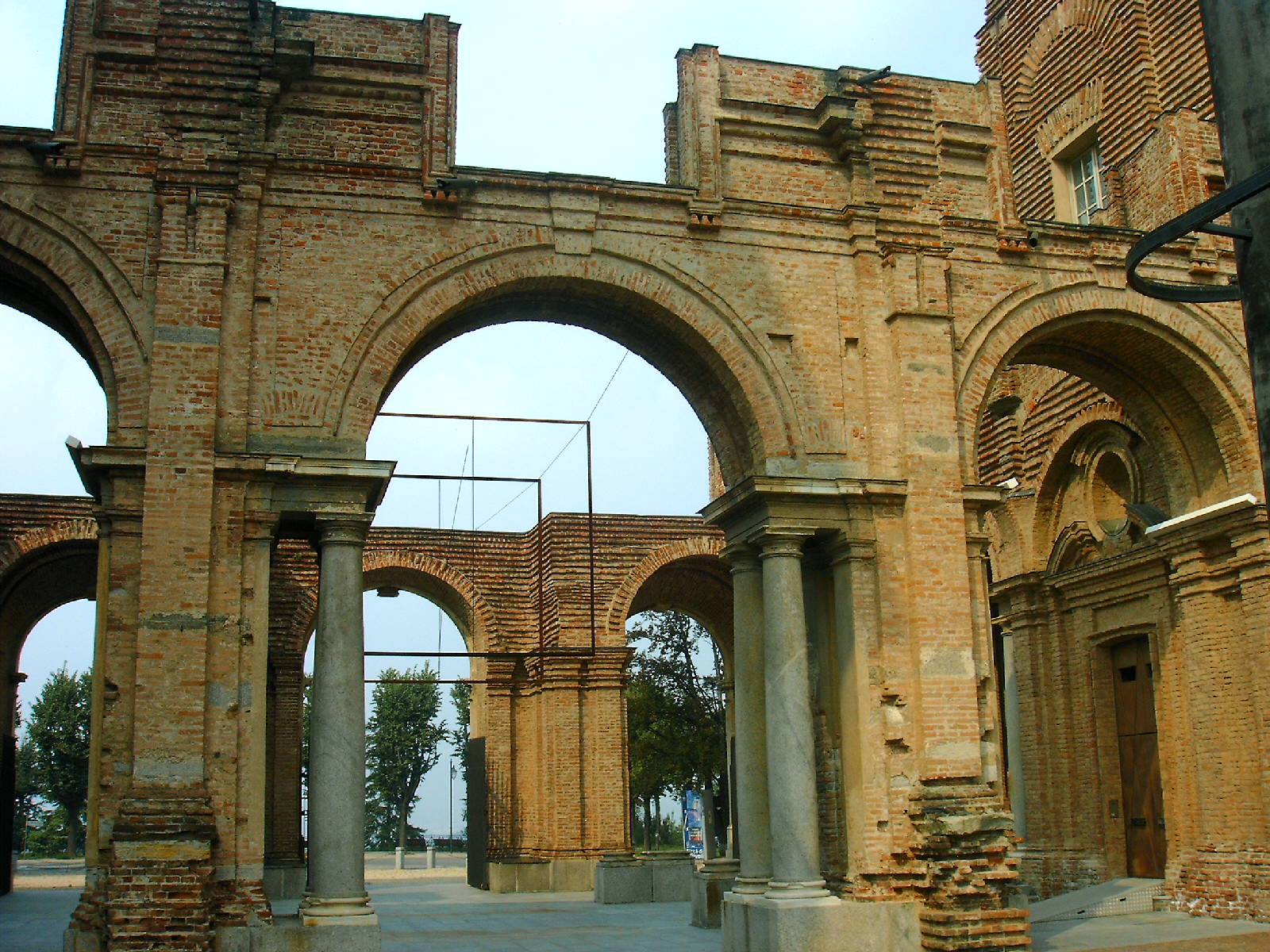|
Magazzino Italian Art
Magazzino Italian Art is a museum and Research Center dedicated to advancing scholarship and public appreciation of postwar and contemporary Italian art in the United States. The museum was founded by Nancy Olnick and Giorgio Spanu with the mission to share works of the group of Italian artists who exhibited together in the late 1960s and early 1970s, affiliated with the art movement of Arte Povera, with American audiences. Magazzino opened to the public on June 28, 2017, with an exhibition dedicated to the influence and legacy of Margherita Stein, a late Italian dealer associated with artists active in Arte Povera circles and beyond. The museum is free and open to the public. Magazzino Italian Art is located in Cold Spring, New York, within the Town of Philipstown on U.S. Route 9, on the former Cyberchron site. Magazzino, which means "warehouse" in Italian, consists of an old farmers’ warehouse (later turned into a dairy distribution center and then a computer factory) and a ... [...More Info...] [...Related Items...] OR: [Wikipedia] [Google] [Baidu] |
Paolo Venini
Paolo Venini (12 January 1895– 22 July 1959) emerged as one of the leading figures in the production of Murano glass and an important contributor to twentieth century Italian design. He is known for having founded the eponymous Venini & C. glassworks. Early life and education Venini was born in the town of Cusano near Milan, Italy. After serving in the Royal Italian Army in World War I, he trained as a lawyer and began his practice in Milan. He soon developed an acquaintance with Giacomo Cappellin, a native of Venice who owned a Milan antiques shop. Murano glassworks In 1921 Venini and Cappellin opened a glass factory called Vetri Soffiati Muranesi Cappellin Venini & C. on the islands of Murano, the historic glass production centre in the lagoon of Venice, Italy. With Luigi Ceresa and Emilio Hochs as investors, they arranged to purchase the recently closed Murano glass factory of Andrea Rioda, hire the former firm's glassblowers, and retain Rioda himself to serve as tec ... [...More Info...] [...Related Items...] OR: [Wikipedia] [Google] [Baidu] |
Lucio Fontana
Lucio Fontana (; 19 February 1899 – 7 September 1968) was an Argentine-Italian painter, sculptor and theorist. He is mostly known as the founder of Spatialism. Early life Born in Rosario, to Italian immigrant parents, he was the son of the sculptor Luigi Fontana (1865—1946). Fontana spent the first years of his life in Argentina and then was sent to Italy in 1905, where he stayed until 1922, working as a sculptor with his father, and then on his own. Already in 1926, he participated in the first exhibition of Nexus, a group of young Argentine artists working in Rosario de Santa Fé."Press Release: Lucio Fontana: Venice/New York opens at Guggenheim Museum" Guggenheim Museum, New York. Work In 1927 Fontana returned to Italy and studied alongside Fausto Melotti under the sculptor Adolfo Wildt, at Accademia di Brera from 1928 to 1930. It was there he presented his first exhibition in 1930, organized by the Milan art gallery ''Il Milione''. During the following ... [...More Info...] [...Related Items...] OR: [Wikipedia] [Google] [Baidu] |
Margherita Von Stein
Margherita von Stein (1921–2003) was an Italian gallerist and an art collector. Career Margherita Stein opened the Christian Stein Gallery in 1966 in Turin, Italy in her apartment at via Teofilo Rossi 3 with an exhibition of Aldo Mondino. She used her husband's name (Christian) instead of her own, as a nom de plume to avoid any prejudices against her work as a woman. Mostly known for her early support for artists associated with Arte Povera, Stein's work fostered the careers of artists like Luciano Fabro, Jannis Kounellis, Francesco Lo Savio, Mario Merz, Giulio Paolini, Michelangelo Pistoletto, Giovanni Anselmo, Gilberto Zorio, Piero Gilardi, Pino Pascali, Giuseppe Penone and Marisa Merz and other important post-WWII artists like Piero Manzoni, Lucio Fontana, Ettore Colla and Mimmo Rotella. In 1996 Stein closed her gallery in Turin and moved to Milan, where she opened a new space in Corso Monforte in 1985 and one in New York in collaboration with Barbara Gladstone ca ... [...More Info...] [...Related Items...] OR: [Wikipedia] [Google] [Baidu] |
Paolo Canevari
Paolo Canevari (born Rome, 1963) is an Italian contemporary artist. He lives and works in New York City. Canevari presents highly recognizable, commonplace symbols in order to comment on such concept as religion, the urban myths of happiness or the major principles behind creation and destruction. Career Between 1989 and 1990 he lived in New York where he has his first solo show ''Rocce''. In the 1990s he exhibited in numerous group shows in Los Angeles at the art gallery of Otis Parsons College of Art and Design, in Paris, in Kiev at the Soros Center for Contemporary Art, Vienna at the Vienna Secession, Frankfurt, in Dublin at the IMMA Irish Museum of Modern Art, Geneva, Taiwan, Liege as well as in Bologna, Rome, Milan, Prato, Naples, Spoleto, Venice. In 1999 the participation in the XIII Quadriennale Palazzo delle Esposizioni Roma. In the next years his work is featured in numerous solo exhibitions. In 2000 in Rome at the Galleria Stefania Miscetti and in Bangkok Center fo ... [...More Info...] [...Related Items...] OR: [Wikipedia] [Google] [Baidu] |
Stefano Arienti
Stefano Arienti (born 1961) is an Italian artist whose art is inspired by the Arte Povera and Conceptual movements. He lives and works in Milan, Italy. He was born in Asola, Lombardy. His work is made of found materials such as magazines, postcards, newspapers and books. Source materials are transformed through minimal actions such as folding or puncturing done repeatedly and systematically. He has exhibited extensively and in 2005, thFondazione Sandretto Re Rebaudengo per l'Arteheld a retrospective of his work. In 2008, Francesco Bonami Francesco Bonami (b. Florence, 1955) is an Italian art curator and writer who is currently Honorary Director of Fondazione Sandretto Re Rebaudengo in Turin. He lives in Milan and Manhattan, New York.Rachel Wolff (February 14, 2010)112 Minutes With ... curated the monumental exhibition "Italics: Italian Art between Tradition and Revolution, 1968-2008" at thPalazzo Grassithat included Arienti's ''Cassetto con strisce'', 1987-1989. In 2009, the ex ... [...More Info...] [...Related Items...] OR: [Wikipedia] [Google] [Baidu] |
Massimo Bartolini
Massimo Bartolini (born 1962 in Cecina Cecina may refer to: * Cecina (meat), a Spanish and Mexican culinary specialty made of beef * ''Cecina'' (gastropod), a genus of freshwater snails in the family Pomatiopsidae * Cecina, Tuscany, Italy * Caecinia gens, an ancient Roman family * Far ...) is an Italian artist. Bartolini works are mainly installations, but also creates video and photographs. Selected works * ''Organi'' (2008) * ''An Outdoor Library'' (2012) References External links List of exhibitionsdocumenta13 listing {{DEFAULTSORT:Bartolini, Massimo Italian contemporary artists 1962 births Living people ... [...More Info...] [...Related Items...] OR: [Wikipedia] [Google] [Baidu] |
Hudson River
The Hudson River is a river that flows from north to south primarily through eastern New York. It originates in the Adirondack Mountains of Upstate New York and flows southward through the Hudson Valley to the New York Harbor between New York City and Jersey City, eventually draining into the Atlantic Ocean at Lower New York Bay. The river serves as a political boundary between the states of New Jersey and New York at its southern end. Farther north, it marks local boundaries between several New York counties. The lower half of the river is a tidal estuary, deeper than the body of water into which it flows, occupying the Hudson Fjord, an inlet which formed during the most recent period of North American glaciation, estimated at 26,000 to 13,300 years ago. Even as far north as the city of Troy, the flow of the river changes direction with the tides. The Hudson River runs through the Munsee, Lenape, Mohican, Mohawk, and Haudenosaunee homelands. Prior to European ... [...More Info...] [...Related Items...] OR: [Wikipedia] [Google] [Baidu] |
Garrison, New York
Garrison is a hamlet in Putnam County, New York, United States. It is part of the town of Philipstown, on the east side of the Hudson River, across from the United States Military Academy at West Point. The Garrison Metro-North Railroad station serves the town. Garrison (a.k.a. Garrison's Landing) was named after 2nd Lieutenant Isaac Garrison, who held a property lot on the Hudson River across from West Point and conducted a ferry service across the Hudson River between the two hamlets. Isaac and his son Beverly Garrison fought in the Battle of Fort Montgomery in 1777, were captured by the British and later set free. The Garrison train wreck took place near Garrison on the Great Hudson River Railway on October 24, 1897, killing 20 people. For the 1969 film '' Hello, Dolly!'' starring Barbra Streisand, Garrison was the filming location for the Yonkers scenes. The Saint Basil Academy in the town served as the finish line of ''The Amazing Race 10'' in 2006. Organization ... [...More Info...] [...Related Items...] OR: [Wikipedia] [Google] [Baidu] |
Alberto Campo Baeza
Alberto Campo Baeza (born 1946, in Valladolid) is a Spanish architect and Full-Time Design Professor at the Escuela Técnica Superior de Arquitectura de Madrid from 1986 to 2017. He retired the same year. He has built a selected number of awarded buildings. He has been considered part of the group of designers who introduced Minimalism in architecture, together with architects such as David Chipperfield and John Pawson. Campo defends the elimination of color in architecture, as a mean to maximize the expressivity of natural light. Biography Alberto Campo graduated from the Universidad Politécnica de Madrid in 1971 and received his PhD in 1982. Campo Baeza taught at ETH Zurich in 1989 and 1990; The Architecture Winter School in Dublin in 1992, Domus International Courses in Naples in 1993; and Virginia Tech in Blacksburg, Virginia; at The Royal Academy in Copenhagen in 1996; at the EPFL Ecole d’Architecture of Lausanne in 1997; the University of Pennsylvania in 1986 and 19 ... [...More Info...] [...Related Items...] OR: [Wikipedia] [Google] [Baidu] |
Turin
Turin ( , Piedmontese language, Piedmontese: ; it, Torino ) is a city and an important business and cultural centre in Northern Italy. It is the capital city of Piedmont and of the Metropolitan City of Turin, and was the first Italian capital from 1861 to 1865. The city is mainly on the western bank of the Po (river), Po River, below its Susa Valley, and is surrounded by the western Alps, Alpine arch and Superga Hill. The population of the city proper is 847,287 (31 January 2022) while the population of the urban area is estimated by Larger Urban Zones, Eurostat to be 1.7 million inhabitants. The Turin metropolitan area is estimated by the Organisation for Economic Co-operation and Development, OECD to have a population of 2.2 million. The city used to be a major European political centre. From 1563, it was the capital of the Duchy of Savoy, then of the Kingdom of Sardinia ruled by the House of Savoy, and the first capital of the Kingdom of Italy from 1861 to 1865. T ... [...More Info...] [...Related Items...] OR: [Wikipedia] [Google] [Baidu] |
Castle Of Rivoli
The Castle of Rivoli is a former Residence of the Royal House of Savoy in Rivoli (Metropolitan City of Turin, Italy). It is currently home to the Castello di Rivoli – Museo d'Arte Contemporanea, the museum of contemporary art of Turin. In 1997, it was placed on the UNESCO World Heritage Site list along with 13 other residences of the House of Savoy. History The castle was probably built in the 9th–10th centuries. Its existence is mentioned for the first time in 1159, in a diploma by Emperor Frederick Barbarossa that ceded the Rivolese territories to the bishops of Turin. The House of Savoy acquired Rivoli in the 11th century. Soon afterward, a feud began with the bishops, which in 1184 resulted in damage to the castle. In 1273 King Edward I of England visited, en route from Crusade to England, he was met by the Count of Savoy's messengers before travelling on to Susa and the Mont Cenis on the way to visit Count Philip I at Saint-Georges-d'Espéranche. In 1330 Amadeus VI of ... [...More Info...] [...Related Items...] OR: [Wikipedia] [Google] [Baidu] |






